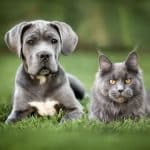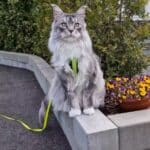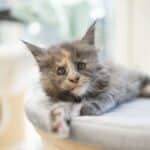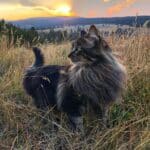Maine Coons have a highly unique appearance. From tufted ears to brushy tails, several things contribute to the Maine Coon’s sought-after look.
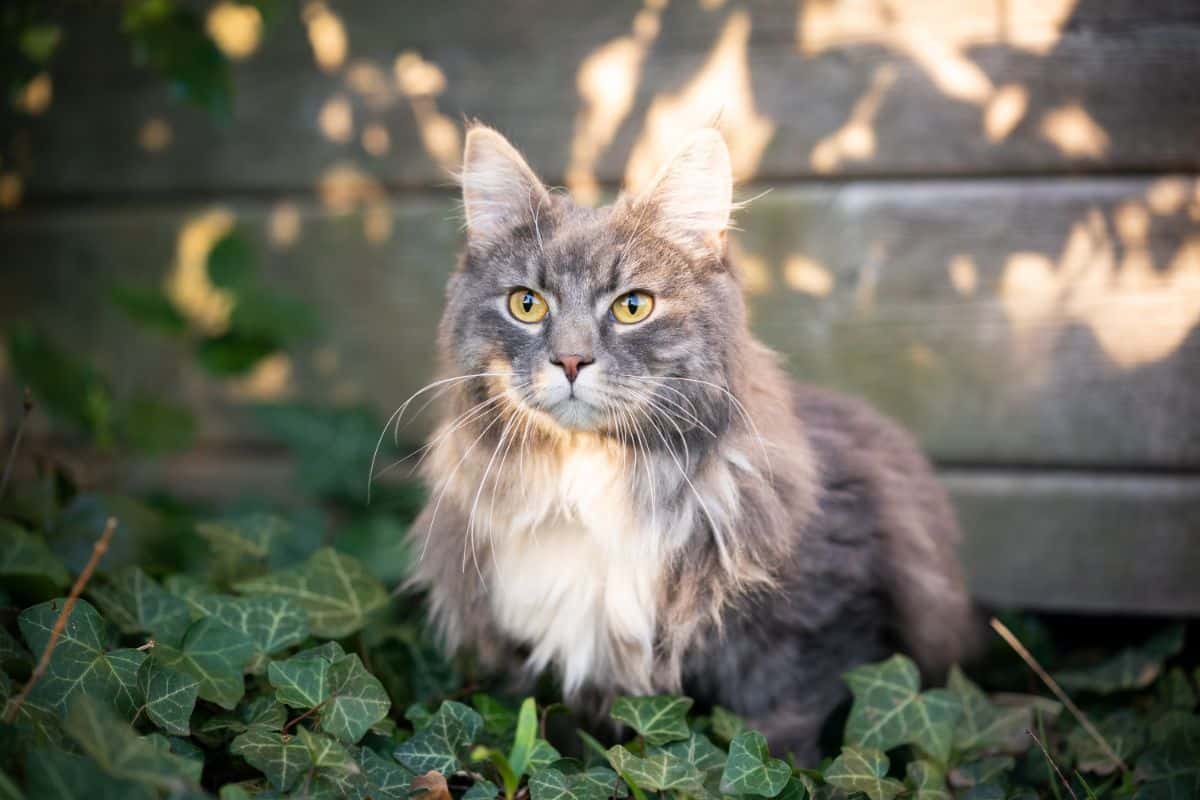
But their famously thick fur has more to it than temperature regulation. Here are nine surprising facts about the Maine Coon’s fur.
Jump to:
Winterized Fur
It’s no surprise that the Maine Coon’s fur is ideal for winter. Perhaps because it hales from a state notorious for snowy weather, the Maine Coon evolved to have thick, water-repellent fur.
It’s perfect for keeping these cats warm and the snow off.
The Maine Coon’s fur is no accident, either. Their thick coats have a method in them. There’s extra fur on a Maine Coon’s:
- Stomach
- Ruff
- Flanks
That ensures that when a Maine Coon decides to hunker down in the snow, they stay warm. The thick fur traps heat even as it keeps moisture away from their organs.
Conversely, they have less fur on their shoulders, the better to galumph through the snow on those partially-webbed feet.
Waterproof Cats
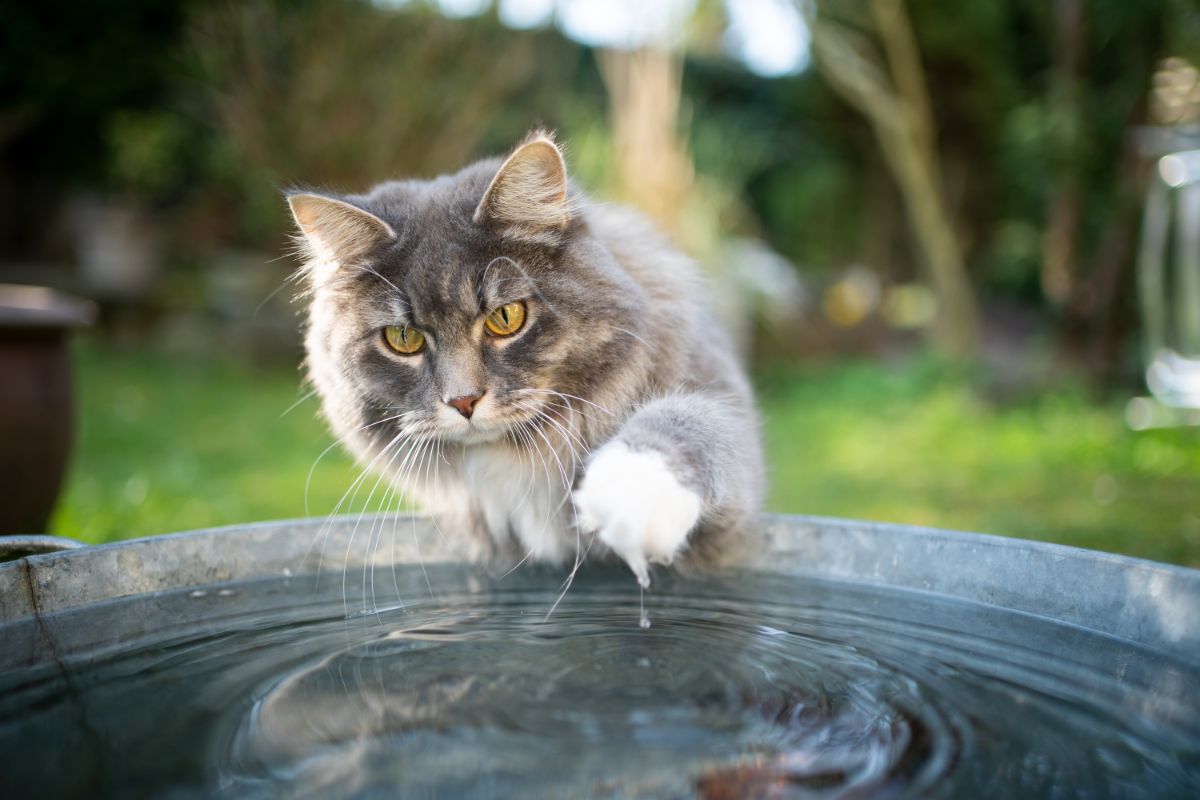
The Maine Coon’s fur may also explain why these cats love water.
Most cats are notorious for their dislike of water. By contrast, the Maine Coon actively seeks it out.
They love an excuse to play with running water, bath water, and kitchen taps.
Bushy Tails
Another reason Maine Coons do well in inclement weather is their tails. Most cats have a tail that averages 12 inches long. But the Maine Coon’s tail is extra long. Their average is closer to 16 inches.
Not only that, but the Maine Coon’s tail is extremely bushy. Most cats only acquire the classic bristle-brush tail when they’re extremely happy or anxious. But the Maine Coon’s tail starts off looking like a Christmas tree and only gets larger depending on its emotional state.
These long, bushy tails can wrap securely around the Maine Coon’s body, adding a further layer of insulation from the cold.
Maine Coons Have Tufted Ears
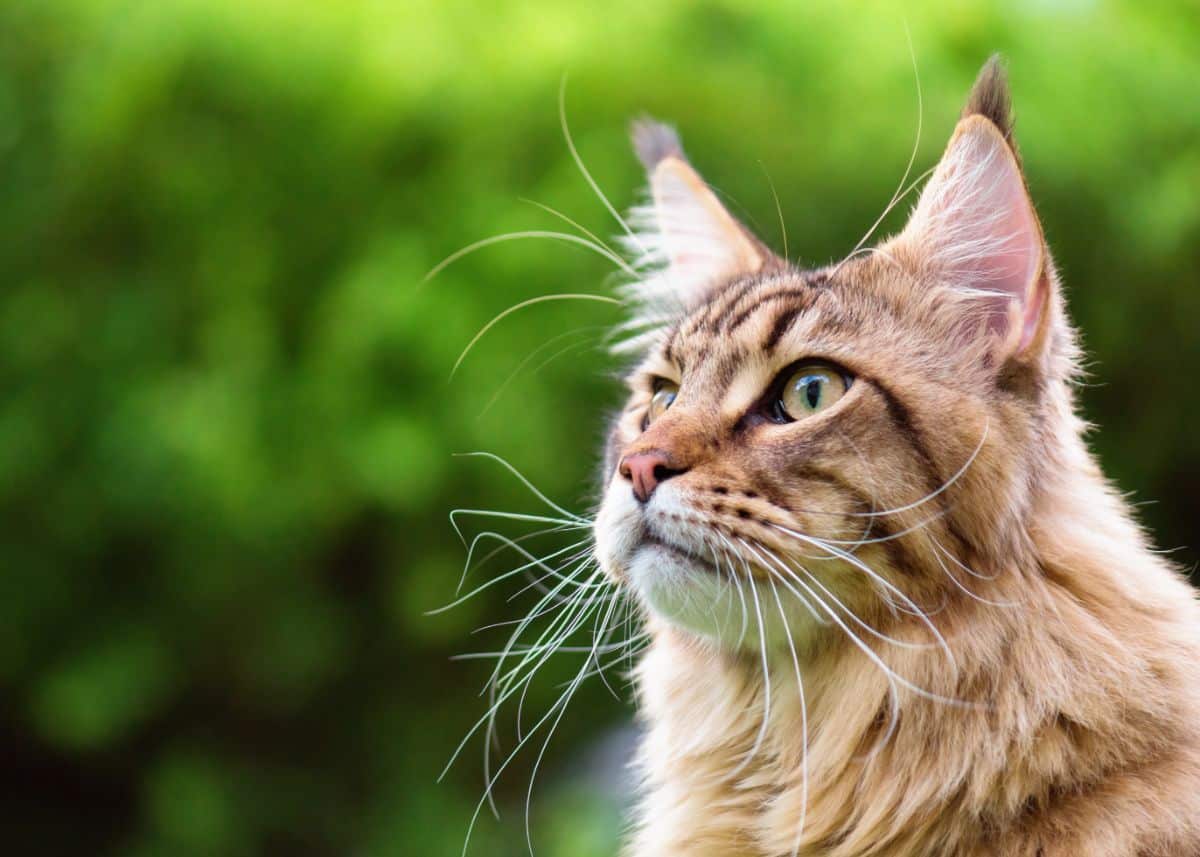
Maine Coon’s don’t just have fur around the neck and covering their body. They also have distinctive, tufted ears.
That’s because feline ears are extremely sensitive to temperature. Like much else about the Maine Coon’s fur, the ear tufts are functional. They ward off frostbite and hypothermia.
In addition, the ear tufts help trap dirt. It’s an unglamorous job, but it reduces your Maine Coon’s risk of ear infections or mites.
The other advantage a Maine Coon gets from those ear tufts has to do with hearing. In addition to keeping debris out, it’s thought that the fur around and in the Maine Coon’s ear helps channel sounds coming in. In other words, Maine Coons have better hearing than their non-tufted feline friends.
Cats of Many Colors
You never see the same cat twice. Even when looking at several black cats, there are usually differences, be it in personality or the kink of a tail.
But Maine Coons are exceptional because of the sheer variety across the breed. There are over 75 coat colors common to Maine Coons. The best-known is brown, but other examples include
- Tabby
- Black
- White
- Blue
- Cream
That said, some colors are more common than others. A few of the rarer Maine Coon fur colors include:
- Tortoiseshell
- Orange
- Silver
- Gold
- White
Maine Coons With White Fur Aren’t White
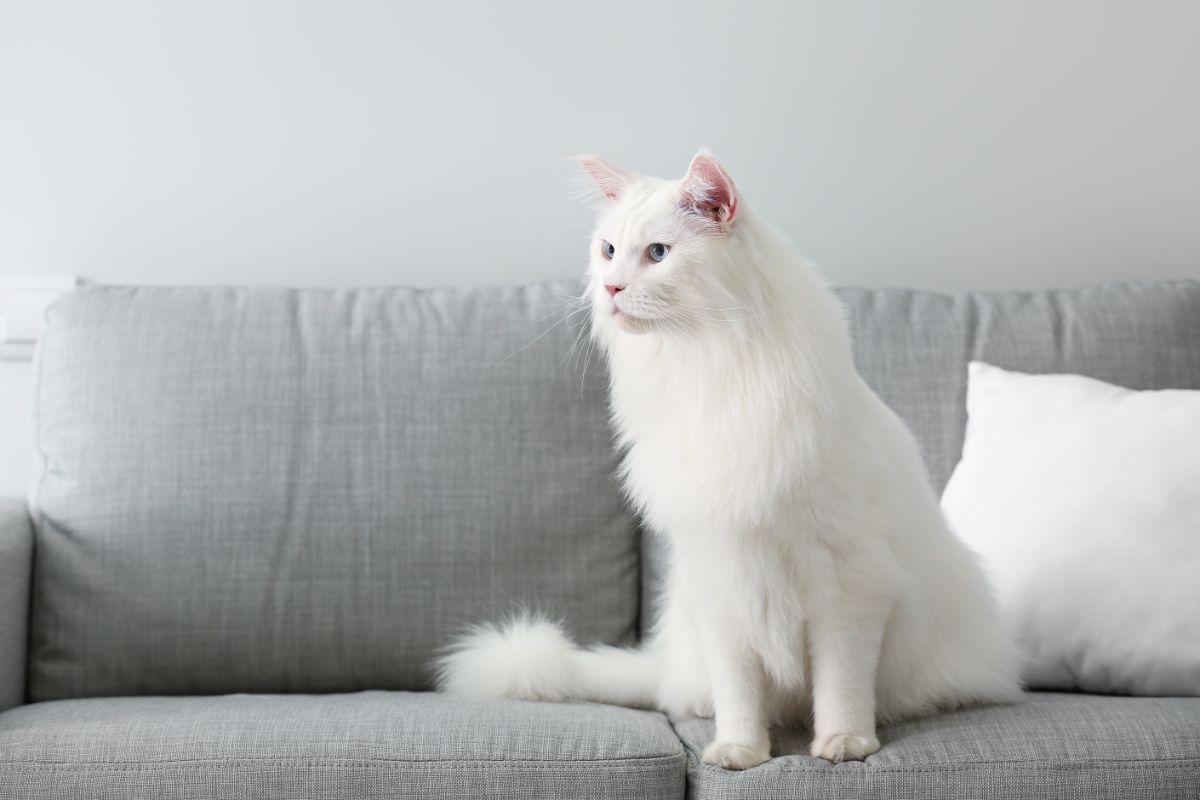
White Maine Coon fur is exceptionally tricky to produce because only about five percent of cats, Maine Coons inclusive, are white to start.
Further complicating the breeding process is the fact that what white cats do exist are more susceptible to deafness than their brightly-colored contemporaries. Many breeders try (and often succeed) to avoid this genetic complication, but it further reduces the genetic pool of cats available.
Interestingly, of all the colors of Maine Coon Fur, white isn’t considered a color. While breeding associations accept it as a coat pattern, it’s filed under ‘Non-colour.’ That’s because to produce a white Maine Coon, you need a masking gene.
The dominant masking gene effectively blocks whatever color coat your Maine Coon would otherwise inherit. Many owners have no idea that’s the case until a white Maine Coon produces a litter displaying her unmasked coat.
Minimal Grooming Required
Despite being notorious for having shaggy coats, the Maine Coon’s fur doesn’t require extensive grooming.
That’s because Maine Coons have a thin undercoat. That means they have less fur than other long-haired cats, and consequently require less upkeep.
However, that’s not to say Maine Coons don’t need any grooming. Lax or infrequent grooming can result in your Maine Coon’s fur developing mats. At best, these are painful. At their worst, they cause skin lesions and risk causing a secondary infection.
That said, provided you stay on top of brushing your Maine Coon’s fur, you don’t necessarily need to bother with elaborate haircuts.
It’s also important to note that because there’s such a striking difference between a Maine Coon’s silky undercoat and the thicker external coat, you will never find an all-purpose grooming brush.
Most owners rotate through several brushes in one grooming session to keep their Maine Coon’s coat looking presentable.
Maine Coon’s Aren’t Born Fluffy

Despite being famous for their thick, insulating fur, Maine Coon’s aren’t born with fully-grown coats.
Instead, they have baby fur, roughly equivalent to birds with down. At around four to six months, they begin shedding their short-haired fur and grow the ubiquitous Maine Coon fur.
However, it won’t happen overnight. Some Maine Coons are four years old before their coat fully develops. That’s not a sign your Maine Coon is a mixed breed. That’s symptomatic of the long, dense fur particular to Maine Coons.
The other thing you notice when looking at Maine Coon kittens is that they don’t have bushy tails. Like the rest of a Maine Coon’s fur, that takes time to grow.
Not All Maine Coons Have a Mane
The other distinctive feature of the Maine Coon’s fur is the mane or ruff around the neck. It’s so synonymous with Maine Coons that many people believe the cat to be the ‘Mane Coon,’ named for its appearance, rather than its native state.
Like the rest of the Maine Coon’s fur, the signature mane takes time to develop. It’s part of what gives these gentle giants their leonine look, but it doesn’t begin development until a Maine Coon kitten is nine months old.
Not only that but not all Maine Coons develop a mane. Even once their adult fur grows in, the mane may never appear.
One reason for that can be weather-dependent. The Maine Coon’s mane is most pronounced in winter when they need extra protection from the weather. Cats with this striking feature often experience ‘thinning’ in warmer weather so they can regulate their temperature.
If you live somewhere less prone to extreme weather conditions, it’s possible your Maine Coon’s mane will never become pronounced. Or they may simply be more cat and less lion.
Conclusion
The ubiquity of the Maine Coon’s fur is second only to their sheer size. But there’s much more to the Maine Coon’s fur than you might expect.
Hopefully, we’ve enlightened you not only about the purpose of that fur but shed some insight on how to care for it and what makes it unique.

